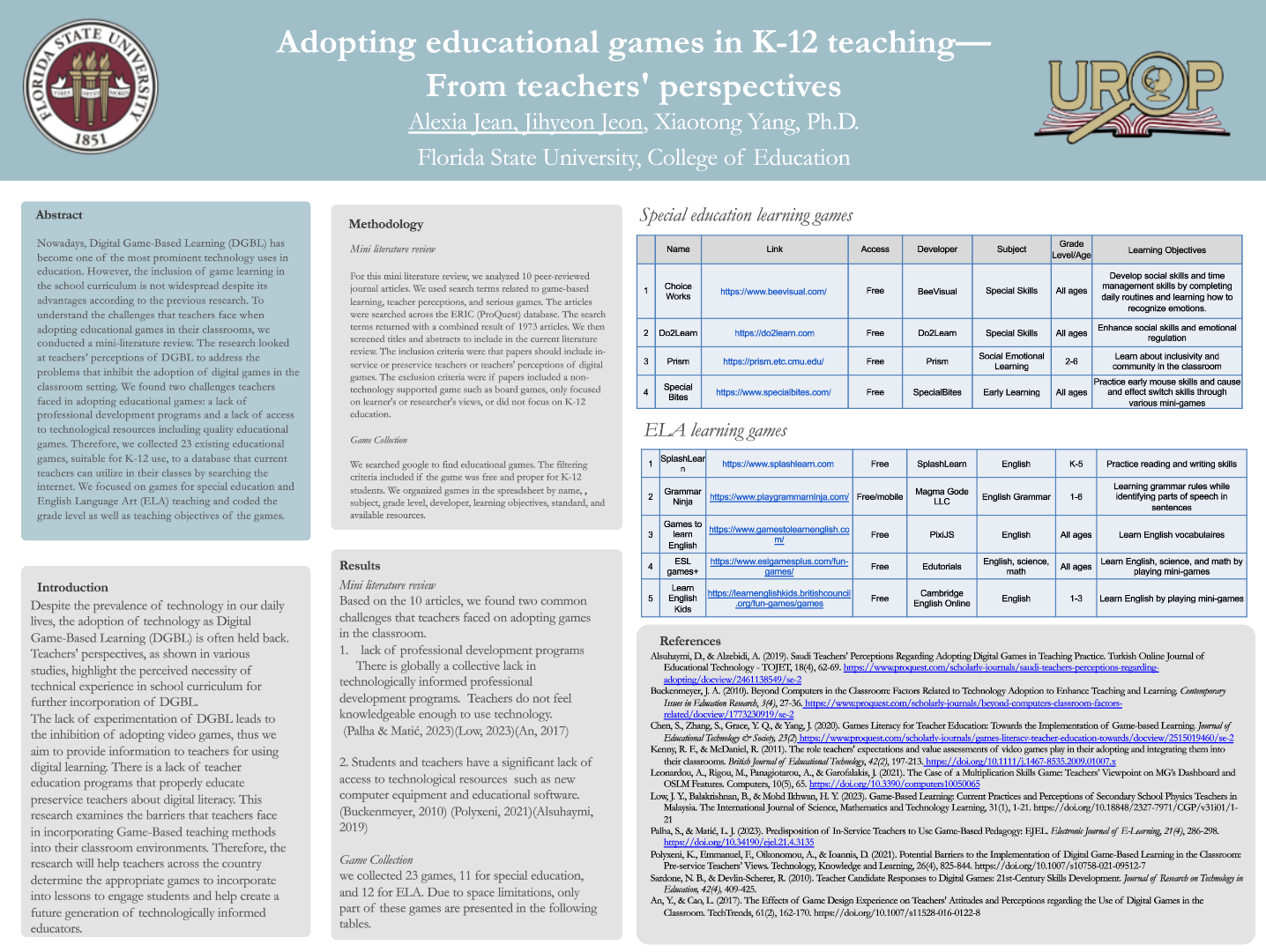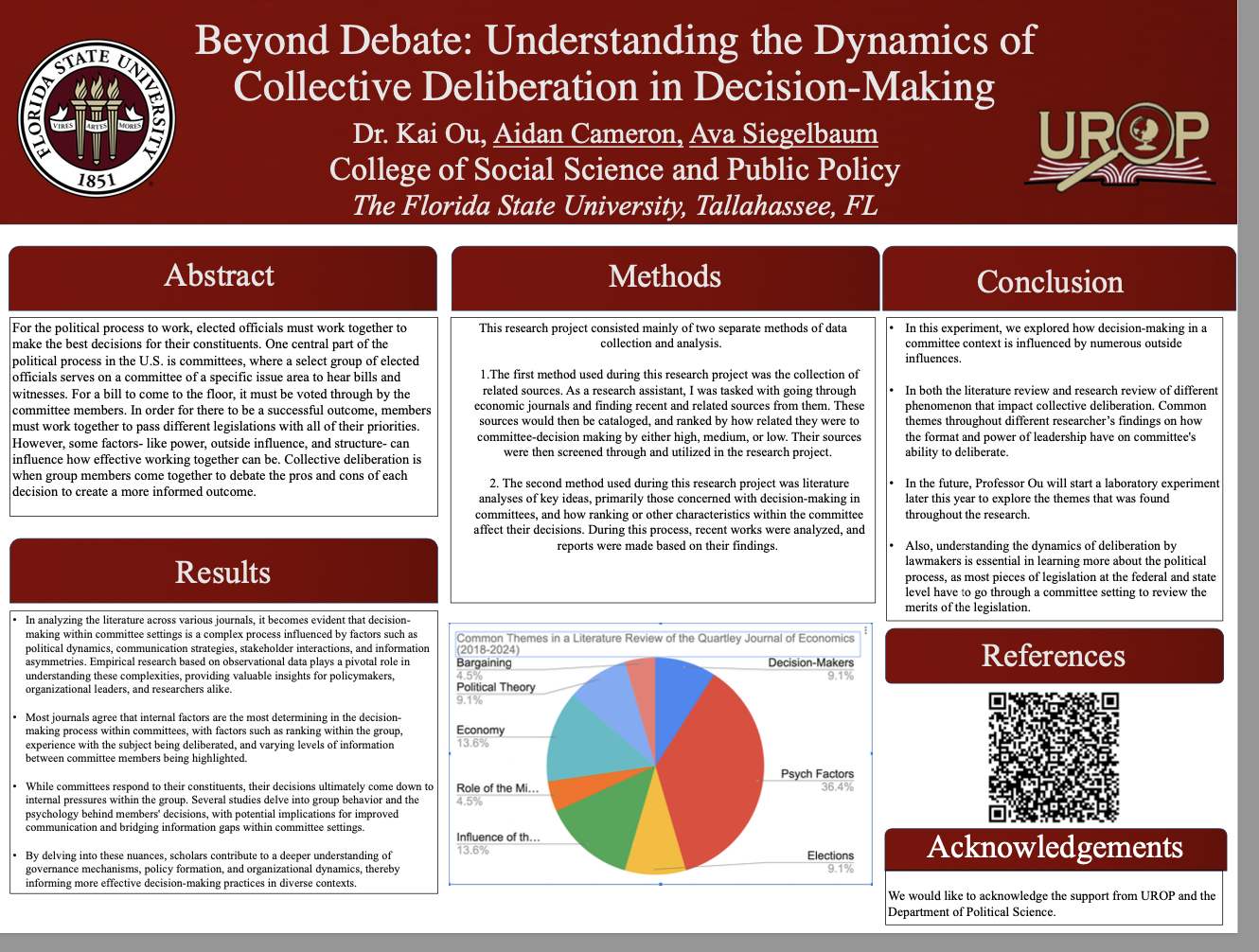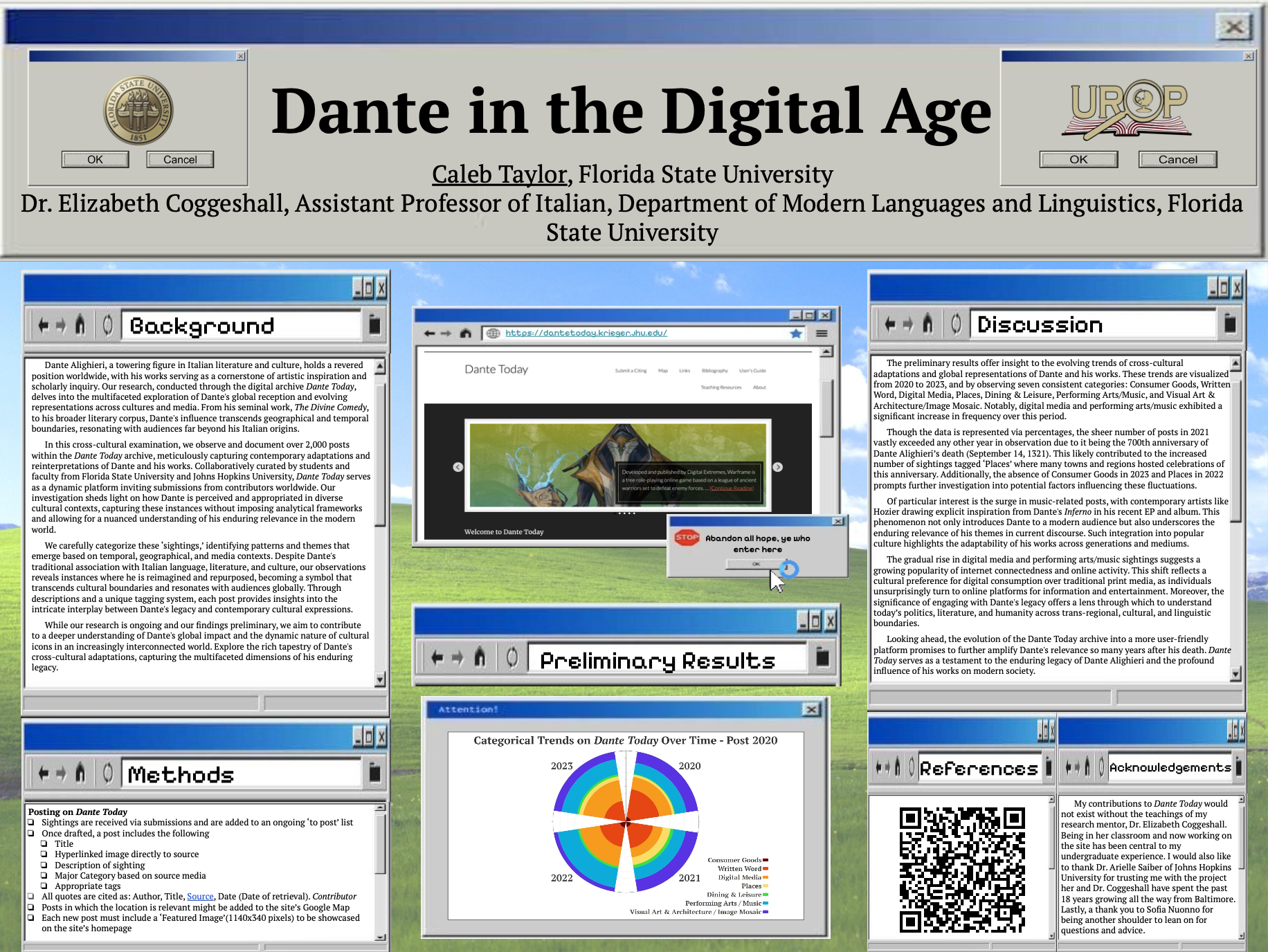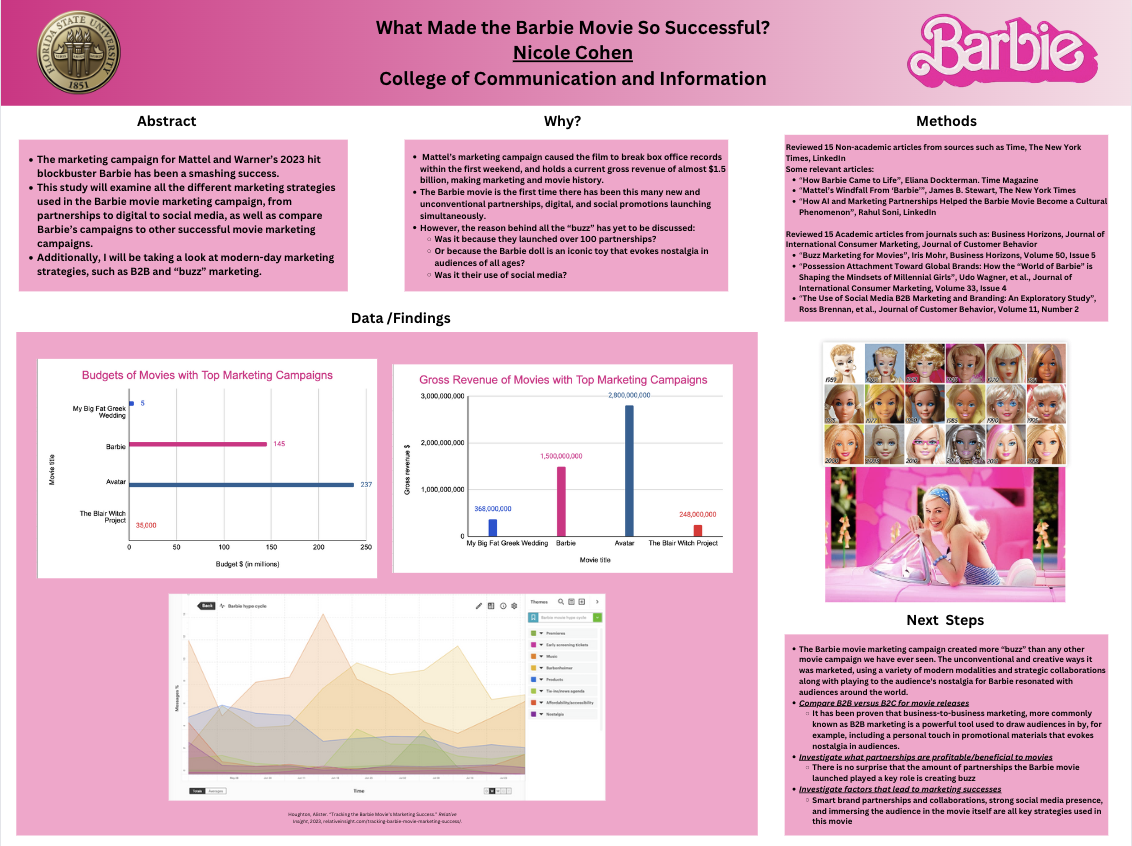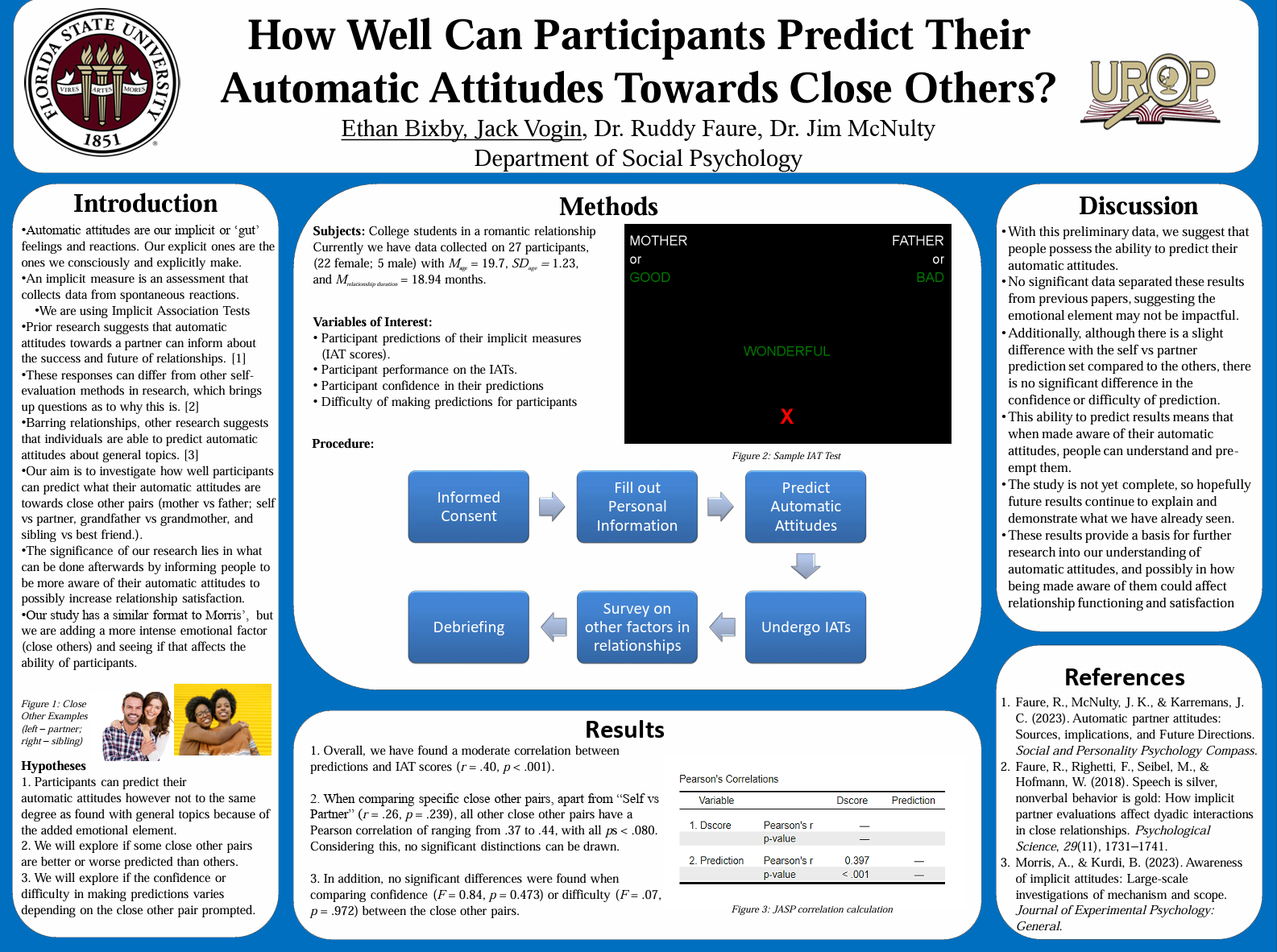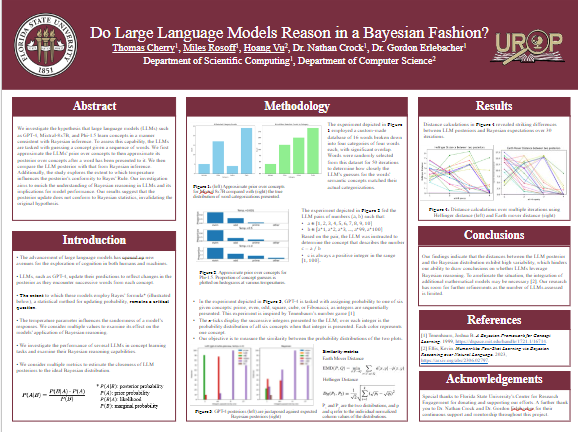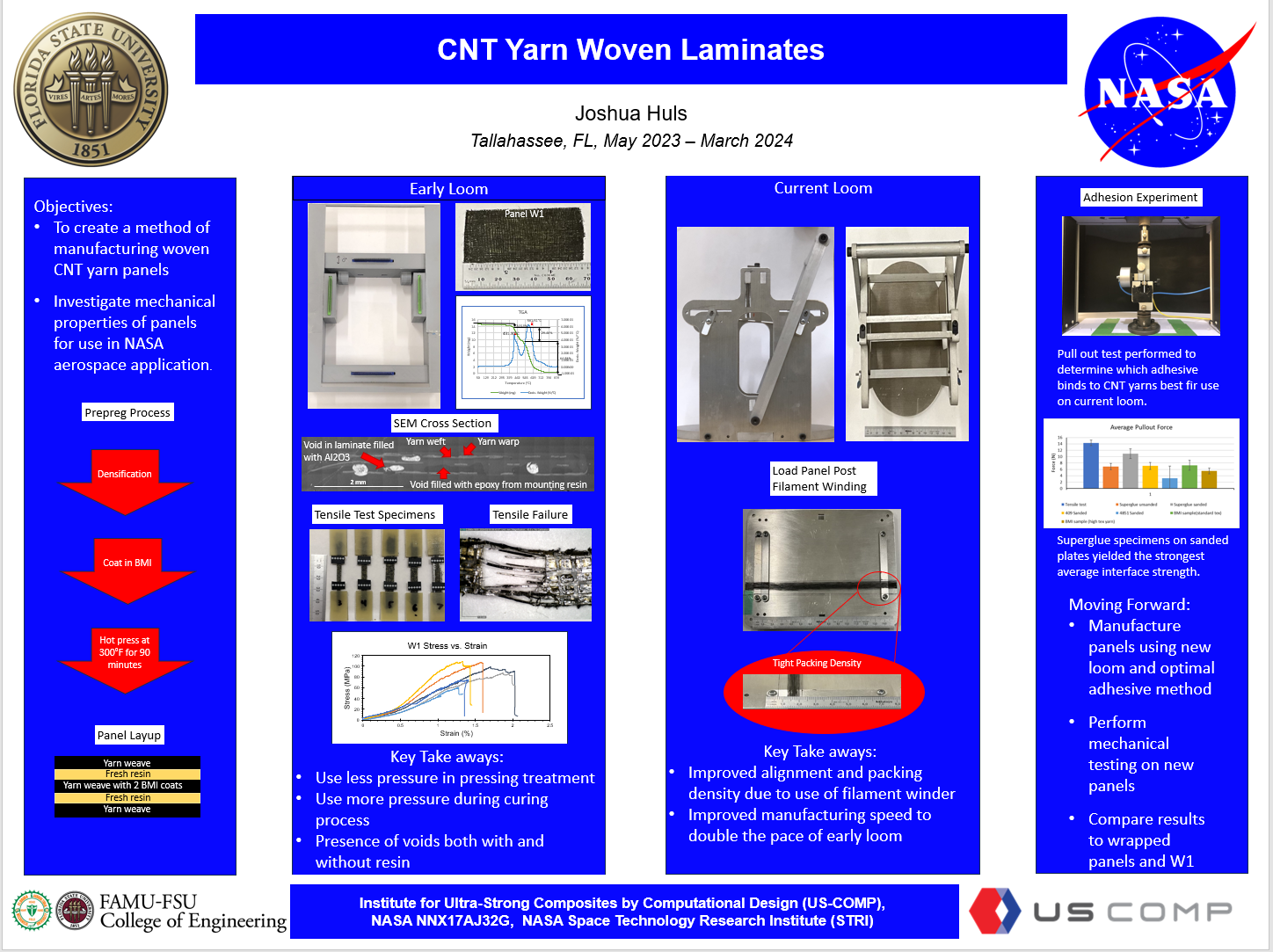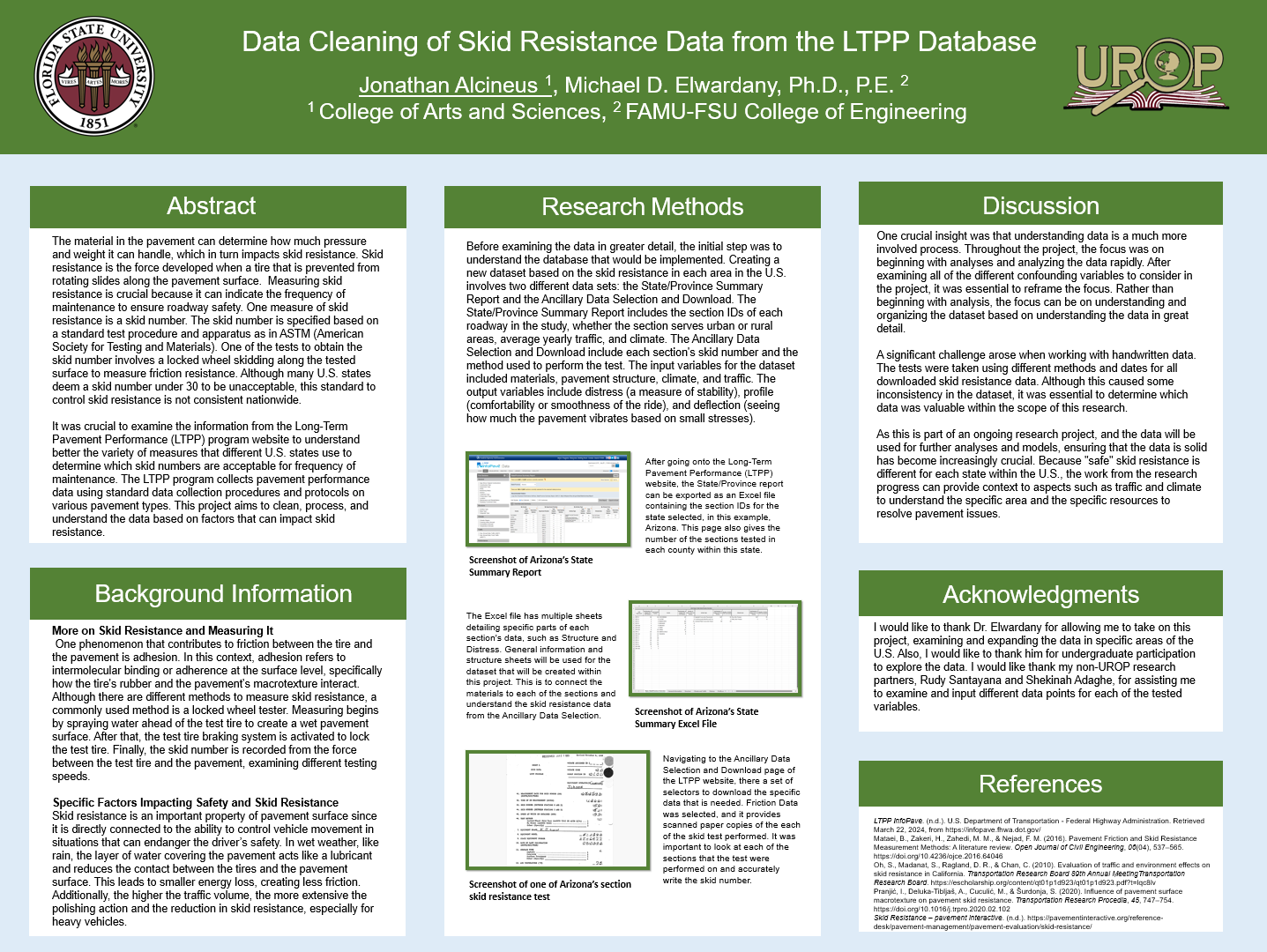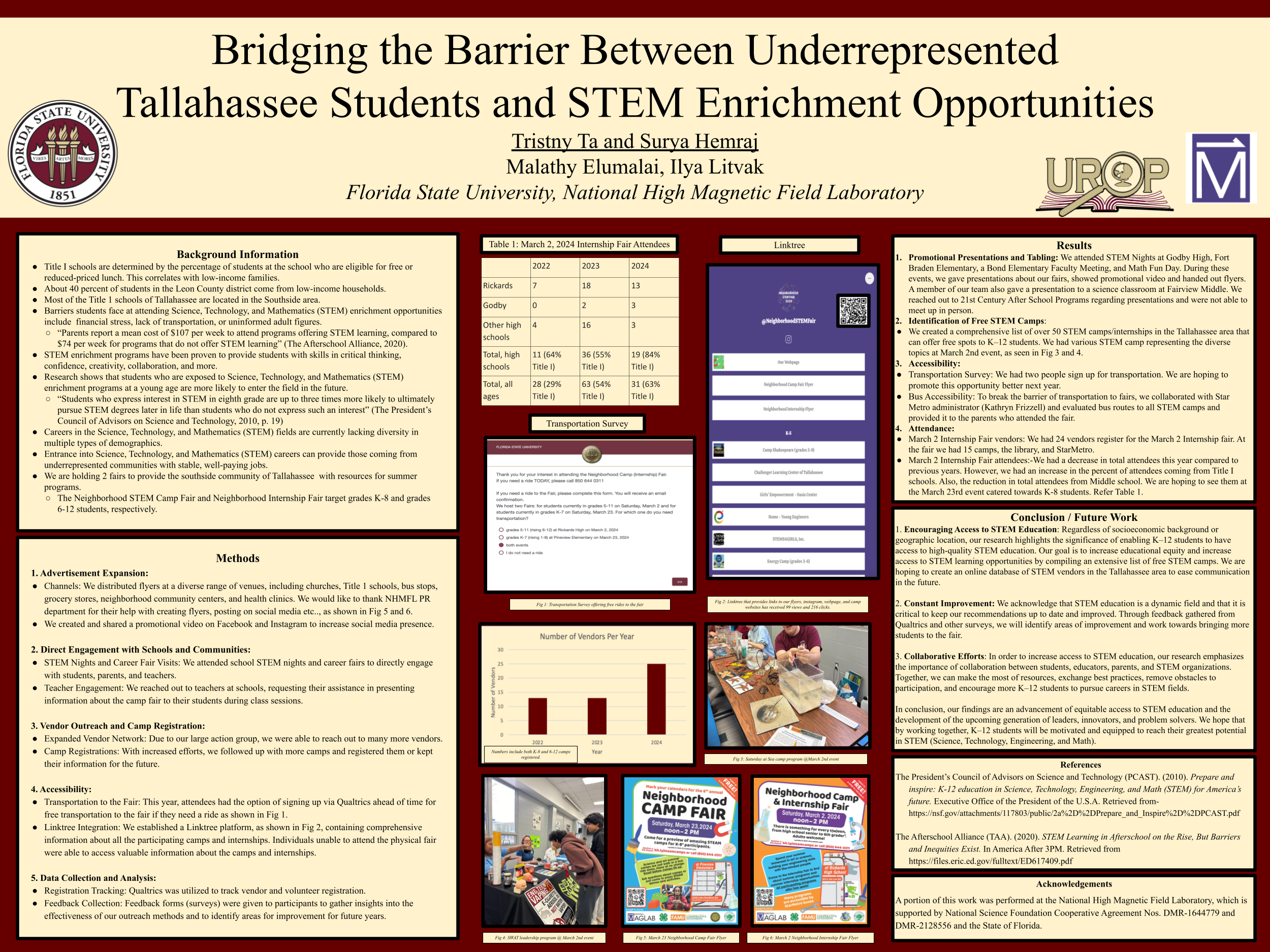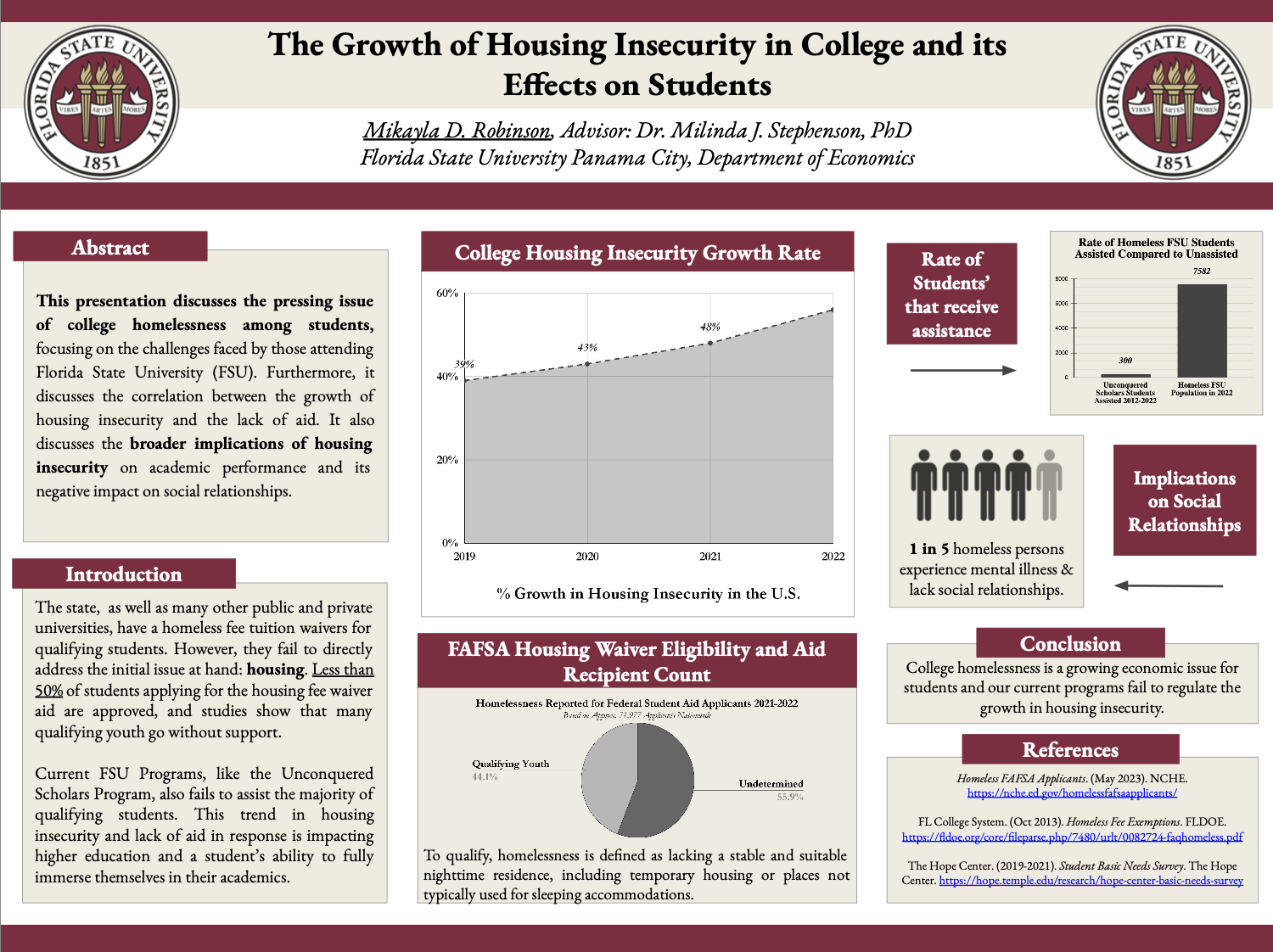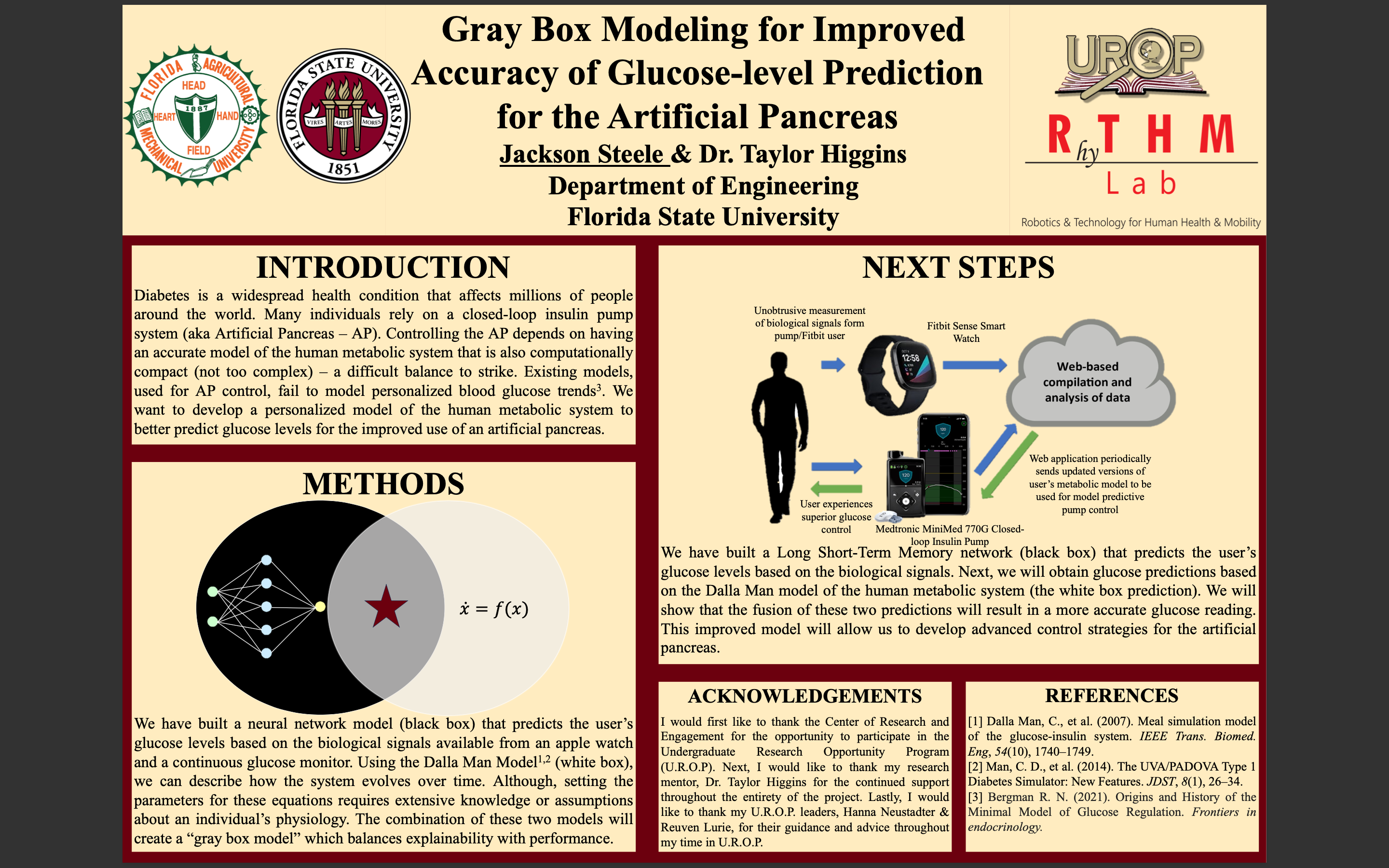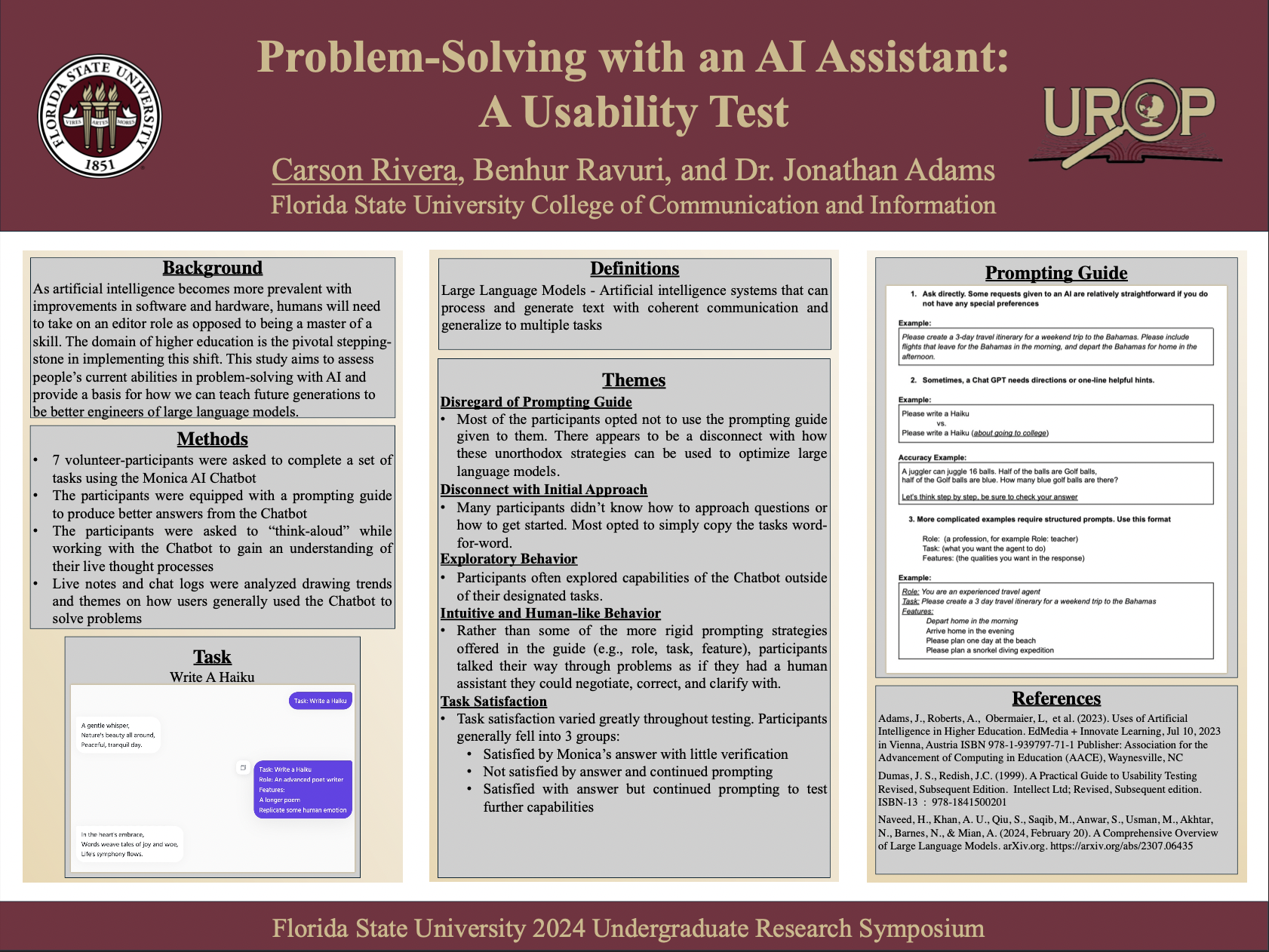Research Symposium
24th annual Undergraduate Research Symposium, April 3, 2024
Jihyeon Jeon Poster Session 5: 4:00 pm - 5:00 pm/396

BIO
I am majoring in Creative Writing, BA. My hometown is South Korea. My research interests are education and psychology.
Adopting educational games in K-12 teaching— From teachers' perspectives
Authors: Jihyeon Jeon, Xiaotong YangStudent Major: Creative Writing
Mentor: Xiaotong Yang
Mentor's Department: College of Education Mentor's College: Florida State University Co-Presenters: Alexia Jean
Abstract
Nowadays, Digital Game-Based Learning (DGBL) has become one of the most prominent technology uses in education. However, the inclusion of game learning in the school curriculum is not widespread despite its advantages according to the previous research. To understand the challenges that teachers face when adopting educational games in their classrooms, we conducted a mini-literature review. The research looked at teachers’ perceptions of DGBL to address the problems that inhibit the adoption of digital games in the classroom setting. We found two challenges teachers faced in adopting educational games: a lack of professional development programs and a lack of access to technological resources including quality educational games. Therefore, we collected 23 existing educational games, suitable for K-12 use, to a database that current teachers can utilize in their classes by searching the internet. We focused on games for special education and English Language Art (ELA) teaching and coded the grade level as well as teaching objectives of the games.
Keywords: video games, education, learning
24th annual Undergraduate Research Symposium, April 3, 2024
Ava Siegelbaum Poster Session 2: 10:45 am - 11:45 am/416
BIO
Ava is a junior at Florida State University, double majoring in political science and psychology. She has always had a passion for politics and has had experience working in the district office, legislative office, and campaigns for members of the federal and state government. Ava hopes to attend law school or work in the legislative side of politics in the future.
Beyond Debate: Understanding the Dynamics of Collective Deliberation in Decision-Making
Authors: Ava Siegelbaum, Kai OuStudent Major: Political Science and Psychology.
Mentor: Kai Ou
Mentor's Department: Department of Political Science Mentor's College: College of Social Sciences and Public Policy Co-Presenters: Aiden Cameron
Abstract
For the political process to work, elected officials must work together to make the best decisions for their constituents. One central part of the political process in the U.S. is committees, where a select group of elected officials serves on a committee of a specific issue area to hear bills and witnesses. For a bill to come to the floor, it must be voted through by the committee members. In order for there to be a successful outcome, members must work together to pass different legislations with all of their priorities. However, some factors- like power, outside influence, and structure- can influence how effective working together can be. Collective deliberation is when group members come together to debate the pros and cons of each decision to create a more informed outcome.
Keywords: politics, decision-making, committee
24th annual Undergraduate Research Symposium, April 3, 2024
Alyssa Duarte Poster Session 4: 2:45 pm - 3:45 pm /136

BIO
Alyssa is an undergraduate student at Florida State University pursuing her B.S. in anthropology with a focus in archaeology and a minor in museum studies. Her research interests include historic archaeology, biological archaeology, Andean archaeology, archaeology in the African diaspora, and Indigenous studies. She has been assisting on the Evergreen Plantation Archaeological Survey for the past academic year through the Undergraduate Research Opportunity Program (UROP) and plans to continue her research through the Honors in the Major program next fall. She is also currently the historian of the Anthropology Society at FSU (ASFSU) and volunteers on the Proyecto Arqueológico Haciendas de Nasca (Haciendas of Nasca Archaeological Project or PAHN).
Analyzing Historic Glass from Evergreen Plantation
Authors: Alyssa Duarte, Dr. Jayur MehtaStudent Major: Anthropology
Mentor: Dr. Jayur Mehta
Mentor's Department: Department of Anthropology Mentor's College: College of Arts and Sciences Co-Presenters:
Abstract
The Evergreen Plantation Archaeological Survey (EPAS) began in 2020 under Dr. Jayur Mehta to discover more about the lives of Black Americans who lived and worked on the Evergreen sugar plantation in Louisiana. This project aims to collect data from the artifacts excavated at the plantation in the summer of 2023, analyze the historic glass, and create a chronology based on the glass analysis. In this study, I cleaned, organized, cataloged, and analyzed the summer 2023 collection, documenting quantitative and qualitative data into an Excel spreadsheet, before focusing on glassware analysis. The study of historic glass in archaeology is important for providing information about regional technological ability, mapping exchange networks, and understanding its utilitarian use in daily life, creating a more detailed picture of Black American history in the southern United States. Preliminary data suggests that the site was inhabited from the early 19th century through the mid-20th century, and the glass analyzed points to primarily drinking and pharmaceutical use. This research is ongoing and resulting data may still change.
Keywords: Anthropology, Archaeology, History
24th annual Undergraduate Research Symposium, April 3, 2024
Caleb Taylor Poster Session 3: 1:30 pm - 2:30 pm /117

BIO
Caleb Taylor, a second-year student from Delray Beach, FL, is completing his BS in Environment & Society this semester, with a minor in International Affairs. His academic focus lies in sustainable design and urban analytics. Caleb plans to pursue an MS in Sustainability Management at Columbia University starting in the fall. Although his current work with Professor Coggeshall may not directly align with his research interests, his previous enrollment in her courses (ITT 3114 & ITW 4700) inspired him to take on the role of a Dante Today research assistant.
Dante in the Digital Age
Authors: Caleb Taylor, Elizabeth CoggeshallStudent Major: Environment & Society
Mentor: Elizabeth Coggeshall
Mentor's Department: Modern Languages and Linguistics Mentor's College: College of Arts and Sciences Co-Presenters:
Abstract
Dante Alighieri, a towering figure in Italian literature and culture, holds a revered position worldwide, with his works serving as a cornerstone of artistic inspiration and scholarly inquiry. Our research, conducted through the digital archive Dante Today, delves into the multifaceted exploration of Dante's global reception and evolving representations across cultures and media. From his seminal work, The Divine Comedy, to his broader literary corpus, Dante's influence transcends geographical and temporal boundaries, resonating with audiences far beyond his Italian origins.
In this cross-cultural examination, we observe and document over 2,000 posts within the Dante Today archive, meticulously capturing contemporary adaptations and reinterpretations of Dante and his works. Collaboratively curated by students and faculty from Florida State University and Johns Hopkins University, Dante Today serves as a dynamic platform inviting submissions from contributors worldwide. Our investigation sheds light on how Dante is perceived and appropriated in diverse cultural contexts, capturing these instances without imposing analytical frameworks and allowing for a nuanced understanding of his enduring relevance in the modern world.
We carefully categorize these ‘sightings,’ identifying patterns and themes that emerge based on temporal, geographical, and media contexts. Despite Dante's traditional association with Italian language, literature, and culture, our observations reveal instances where he is reimagined and repurposed, becoming a symbol that transcends cultural boundaries and resonates with audiences globally. Through descriptions and a unique tagging system, each post provides insights into the intricate interplay between Dante's legacy and contemporary cultural expressions.
Keywords: Italian, Dante, Web-Design
24th annual Undergraduate Research Symposium, April 3, 2024
Joshua Kessner Poster Session 2: 10:45 am - 11:45 am/38

BIO
Hi! My name is Joshua Kessner and I'm a sophomore at Florida State University from Boca Raton. I am a part of the Undergraduate Research Opportunity Program (UROP), Pi Lambda Phi fraternity, the Human Development and Family Science Club, and intramural sports. I am interested in research dealing with the human body, as well as gaining a better understanding into what goes into the administration of schools. When I graduate, I plan on becoming an elementary school teacher, and working in the administrative side of schooling.
Bring On The Heat: Ventilation In Structural Firefighter Suits
Authors: Joshua Kessner, Meredith McQuerryStudent Major: Elementary Education
Mentor: Meredith McQuerry
Mentor's Department: Retail Entrepreneurship Mentor's College: Jim Moran College of Entrepreneurship Co-Presenters: Mallory McCray
Abstract
When working within the fireground, firefighters rely on their protective gear to provide thermal protection while maintaining thermoregulation to prevent overexertion and heat stress. Without proper breathability, heat exhaustion and suboptimal performance become a prevalent danger for firefighters. Therefore, the purpose of this research was to develop a protocol to assess ventilation and unique evaporative material placement within structural firefighter turnout suits for their ability to increase total heat loss (THL). One of five ensembles (turnout coat and pants) was assessed using an ANDI dynamic sweating thermal manikin in the ThermaNOLE Comfort Lab® at Florida State University. The ensemble underwent three twenty-to-five minute work/rest cycles at both 6.8 Mets and 8 Mets utilizing a human thermal model (ManikinPC) integrated into the manikin’s ThermDAC software. Predicted measurements for core temperature, skin temperature, and sweat rate were collected along with subjective perceptions of comfort and sensation. Findings indicate the 6.8 Mets protocol is most appropriate to analyze ventilation placement of each turnout suit design without succumbing to fatal levels of heat exhaustion. As this protocol realistically predicts active firefighting scenarios, future research should use an ANDI dynamic sweating thermal manikin at 6.8 Mets to test the five ensembles, each with different evaporative cooling techniques which allow for different amounts of heat transfer, thus predicting the physiological performance of firefighters.
Keywords: Ventilation, Firefighter, PPE
24th annual Undergraduate Research Symposium, April 3, 2024
Nicole Cohen Poster Session 4: 2:45 pm - 3:45 pm /412
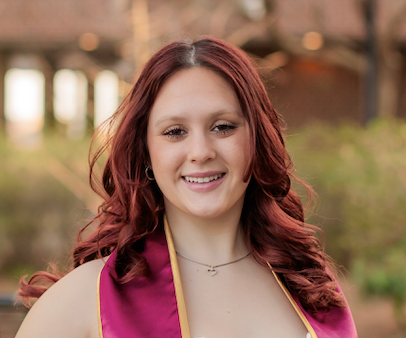
BIO
Nicole Cohen, who goes by Nikki, is Senior at Florida State and will be graduating this Spring. She is double majoring in Media/ Communication Studies and Editing, Writing, and Media. Currently, she is in the process of finding a creative and engaging in-person job in a city environment post-graduation. Her interests include film, theatre, fashion, writing, social media, music, and politics.
What Made the Barbie Movie So Successful?
Authors: Nicole Cohen, Ebrahim RandereeStudent Major: Media and Communication Studies and Editing, Writing, and Media
Mentor: Ebrahim Randeree
Mentor's Department: Associate Dean, Finance & Administration Mentor's College: College of Communication and Information Co-Presenters:
Abstract
The marketing campaign for Mattel and Warner’s 2023 hit blockbuster Barbie has been a smashing success. There have never been this many new and unconventional partnerships, digital, and social promotions going on at the same time, and being as successful as the ones ran for the Barbie movie. However, the reason behind all the “buzz” has yet to be discussed. Was it because they launched over 100 partnerships? Or because the Barbie doll is an iconic toy that evokes nostalgia in audiences of all ages? This study will examine all the different marketing strategies used in the Barbie movie marketing campaign, from partnerships to digital to social media, as well as compare Barbie’s campaigns to other successful movie marketing campaigns. Additionally, I will be taking a look at modern-day marketing strategies, such as B2B and “buzz” marketing. Mattel’s marketing campaign caused the film to break box office records within the first weekend, and holds a current gross revenue of almost $1.5 billion, making marketing and movie history.
Keywords: marketing campaign, Barbie movie, movie marketing mix, brand partnerships, social media
24th annual Undergraduate Research Symposium, April 3, 2024
Jack Vogin Poster Session 3: 1:30 pm - 2:30 pm /264

BIO
I am currently a sophomore and am on track to graduate in the Fall of 2024. I am unsure exactly of what my future goals are and whether or not graduate school is the route for me now, but for now I have been conducting some really interesting research under Dr. Ruddy Faure. Even though we are done with the project I am presenting for UROP, I am continuing to work under him on a longer term project looking into automatic attitudes in romantic relationships. My research interests however are broad, expanding across clinical, social, and cognitive psychology. Overall I really have a passion for psychology and research in it and but as I said I am still figuring out my future goals in the field.
How Well Can Participants Predict Their Automatic Attitudes Towards Close Others?
Authors: Jack Vogin, Dr. Ruddy FaureStudent Major: Psychology
Mentor: Dr. Ruddy Faure
Mentor's Department: Psychology Mentor's College: Arts and Sciences Co-Presenters: Ethan Bixby
Abstract
Relationships are important for positively improving our lives. Often, these relationships are impacted by the automatic “gut” attitudes we have towards others. Prior research has displayed that these automatic attitudes can show positive or negative perceptions of a relationship more accurately than a participant’s own words. In addition, it has been found that participants can predict their automatic attitudes about general topics, however there is yet to be a study on how well participants can do so about close others. To test this, FSU Undergraduate students in relationships were instructed through a series of tasks where they self-report the relationships between themselves and key figures such as parents, best friends, and partners in their lives. Then these participants, through a program coded within Inquisit, made predictions about their automatic attitudes and completed IATs (Implicit Association Tests) to measure their automatic attitudes. The study is still currently ongoing, however preliminary results have indicated there is a moderate correlation between the predictions of participants and their automatic attitudes, and we expect data to continue on this trend. If this does continue to be the case, it would suggest that future research into various relationships holds potential, such as providing insight into improving romantic relationships.
Keywords: Predict, Automatic Attitudes, Close Relationships
24th annual Undergraduate Research Symposium, April 3, 2024
Thomas Cherry Poster Session 4: 2:45 pm - 3:45 pm /60
BIO
Thomas is a first-year undergraduate with a passion for mathematics and computer science. While his exact career aspirations are to be determined, he hopes for a career that allows him to harness the skills he gains through his studies in each of these fields.
Do Large Language Models Reason in a Bayesian Fashion?
Authors: Thomas Cherry, Dr. Gordon ErlebacherStudent Major: Computational Science
Mentor: Dr. Gordon Erlebacher
Mentor's Department: Scientific Computing Mentor's College: Arts and Sciences Co-Presenters: Miles Rosoff, Hoang Vu
Abstract
We investigate the hypothesis that large language models (LLMs) such as GPT-4, Mixtral-8x7B, and Phi-1.5 learn concepts in a manner consistent with Bayesian inference. To assess this capability, the LLMs are tasked with guessing a concept given a sequence of words. We first approximate the LLMs' prior over concepts to then approximate its posterior over concepts after a word has been presented to it. We then compare the LLM posterior with that from Bayesian inference. Additionally, the study explores the extent to which temperature influences the posterior's conformity to Bayes' Rule. Our investigation aims to enrich the understanding of Bayesian reasoning in LLMs and its implications for model performance. Our results suggest that the posterior update does not conform to Bayesian statistics, invalidating the original hypothesis.
Keywords: Artificial Intelligence, Large Language Models
24th annual Undergraduate Research Symposium, April 3, 2024
jane zirnhelt Poster Session 3: 1:30 pm - 2:30 pm /213
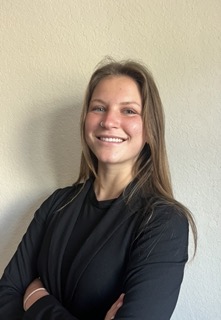
BIO
Hello I am Jane Zirnhelt and I am a sophomore from Minneapolis, Minnesota studying criminology and business. Here at Florida State I am involved in the honors program, UROP, LAE, and intramural beach volleyball. I am interested in various topics within criminology and hope to one day work a job that focuses on sales, private security, and or criminology research. I am motivated by my desire to make my family proud and someday be able to travel the world.
Examining TBI (Traumatic Brain Injury) Types and their Impact on Subsequent Reincarceration Risk
Authors: jane zirnhelt, Joseph SchwartzStudent Major: criminology
Mentor: Joseph Schwartz
Mentor's Department: Criminology Mentor's College: College of Criminology and Criminal Justice Co-Presenters:
Abstract
Traumatic brain injury (TBI) has been recognized as a risk factor that contributes to various forms of future criminal justice contact, including incarceration. TBIs occur in different contexts, which may introduce additional risk factors that further increase or decrease the likelihood of subsequent criminal justice contact. Despite this possibility, previous research has yet to examine the potential role of this context empirically. Relying on data from a total jail cohort comprised of all individuals incarcerated in a large midwestern county between February and September 2017 (N = 4,713), this study examines mental health problems, reentry difficulties, and the average time to reincarceration among justice involved individuals who have previously sustained a TBI from varying sources including car accidents, falls, and victimization events. The findings indicate that those individuals who sustained a TBI from a victimization event experienced more mental health problems and reentry difficulties but were not reincarcerated more quickly compared to those who sustained a TBI from another source and those who had not previously sustained a TBI. These findings underscore the need for heightened awareness and consideration of the context in which TBIs occur among incarcerated individuals. The findings from the current study also demonstrate the necessity for specially tailored interventions aimed at addressing the unique challenges faced by individuals with TBIs stemming from victimization, aiming to enhance their prospects for successful reentry into society following incarceration.
Keywords: Traumatic Brain Injury, Incarceration, victimization
24th annual Undergraduate Research Symposium, April 3, 2024
Rickerson Geneus Poster Session 5: 4:00 pm - 5:00 pm/216
BIO
Hello, I am Rickerson Geneus a Haitian-American presidential scholar from Broward County, Florida. Due to my love for both medicine and computers I chose to participate in biomedical engineering here at FSU. To go along with my interest I have decided to research AI and heart cells!
Developing An AI-based Particle-tracking Algorithm For Cardiac Muscle Cell Growth and Contractility
Authors: Rickerson Geneus, Dr. Christopher SolisStudent Major: Biomedical Engineering
Mentor: Dr. Christopher Solis
Mentor's Department: College of Health and Human Sciences Mentor's College: College of Education, Health, and Human Sciences, Florida State University Co-Presenters: Matthew Hutchins, Hannah Maken
Abstract
Heart disease is the leading cause of death in the United States, which brings about many concerns of how to overcome this issue. In the research we were able to perform with Dr. Solis, we studied how heart cell’s sarcomere’s (the rudimentary unit that makes up muscle fiber) move regularly and relative to the administration of various medications. To make the visualization of the changes more efficient, we decided to create an AI that detects the differences in the sarcomeres. To create this AI, we performed a review of a multitude of research papers with information related to AI and its performance/ability to scan images, as well as some papers related to sarcomere’s and its reaction to different drugs. Once we performed these peer-reviewed paper analyses, we moved on to segmenting the images manually to train the AI and creating the AI. We were able to segment a vast number of images and began to create an AI that will be able to properly segment and analyze images. We identified that the image segmenter tool from MATLAB was the ideal algorithm to produce ground truth elements for sarcomere identification.
Keywords: AI, Heart Cells, Computer Science
24th annual Undergraduate Research Symposium, April 3, 2024
Joshua Huls Poster Session 3: 1:30 pm - 2:30 pm /177
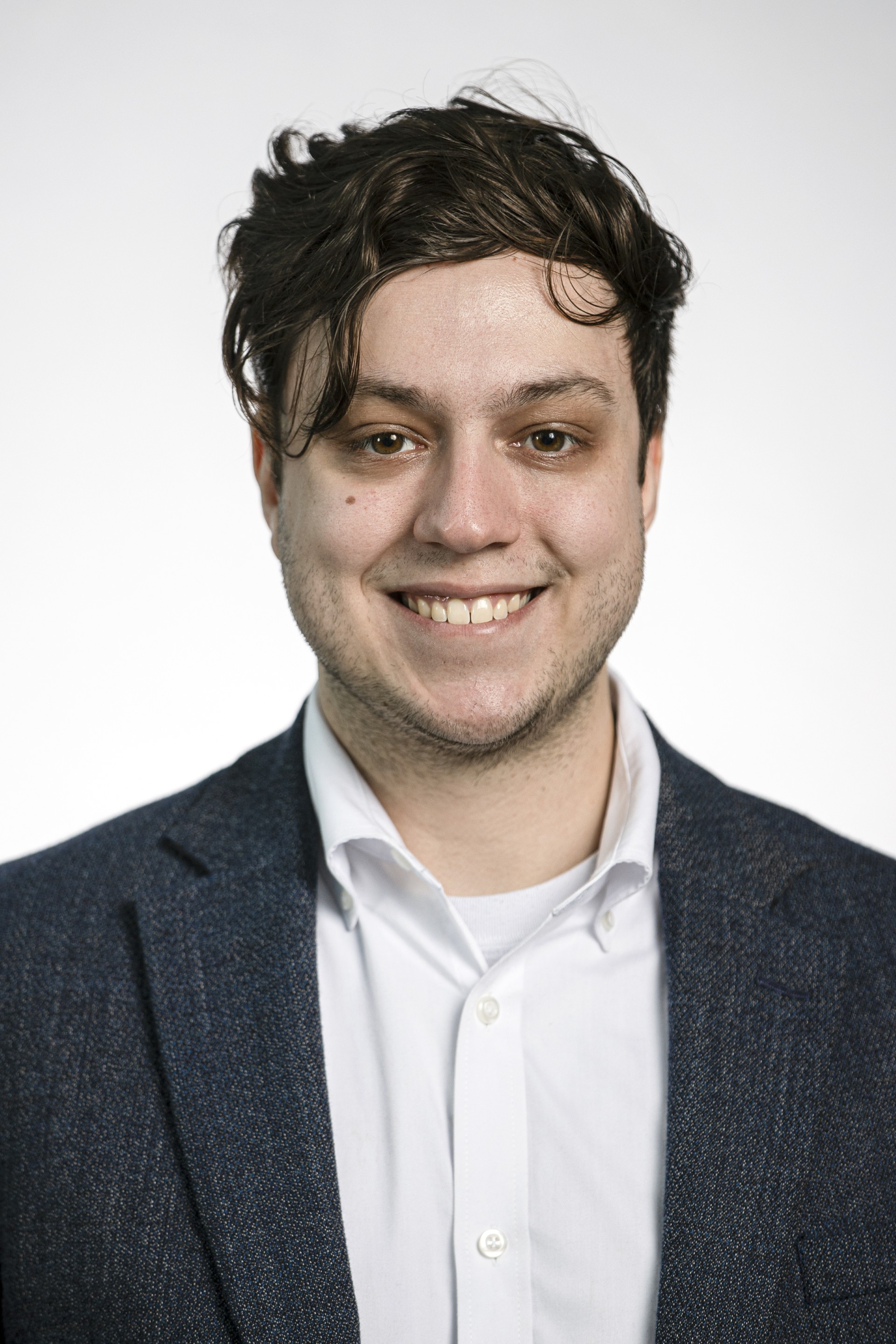
BIO
I am a mechanical engineering senior from Lakeland Florida with a interest in cutting edge materials research. I enjoy open ended problem solving and the rigors of project design. My personal goals lie in engineering leadership as I prefer working with a team and motivating others through personal example and solid communication.
CNT Yarn Woven Laminates
Authors: Joshua Huls, Zhiyong LiangStudent Major: Mechanical Engineering
Mentor: Zhiyong Liang
Mentor's Department: Industrial Engineering Mentor's College: FAMU-FSU College of Engineering Co-Presenters:
Abstract
This research depicts the creation of a method of manufacturing and testing woven CNT yarn panels for use in NASA aerospace application. Initial manufacturing methods include weaving CNT yarns into sheets, densifying sheets in a hot press, applying prepreg of BMI resin to each sheet, then binding multiple woven sheets together into one panel applying fresh resin between sheets and letting it cure. These panels are then tensile tested to determine mechanical properties such as ultimate tensile strength and modulus of elasticity to evaluate the potential usage of such materials in practical industrial settings.
Keywords: Composite, CNT, Materials, Weaving, Loom
24th annual Undergraduate Research Symposium, April 3, 2024
Jonathan Alcineus Poster Session 2: 10:45 am - 11:45 am/434

BIO
I am a third-year double major in Statistics and Computer Science from Orange Park, FL. I am interested in data and how to use it to solve real-world issues. My career interests include machine learning, data analysis, and augmented reality (AR) and how they can impact fields such as education, media, etc.
Data Cleaning of Skid Resistance Data from the LTPP Database
Authors: Jonathan Alcineus, Dr. Michael D. ElwardanyStudent Major: Statistics, Computer Science
Mentor: Dr. Michael D. Elwardany
Mentor's Department: Civil & Environmental Engineering Mentor's College: FAMU-FSU College of Engineering Co-Presenters:
Abstract
The material in the pavement can determine how much pressure and weight it can handle, which in turn impacts skid resistance. Skid resistance is the force developed when a tire that is prevented from rotating slides along the pavement surface. Measuring skid resistance is crucial because it can indicate the frequency of maintenance to ensure roadway safety. One measure of skid resistance is a skid number. The skid number is specified based on a standard test procedure and apparatus as in ASTM (American Society for Testing and Materials). One of the tests to obtain the skid number involves a locked wheel skidding along the tested surface to measure friction resistance. Although many U.S. states deem a skid number under 30 to be unacceptable, this standard to control skid resistance is not consistent nationwide.
It was crucial to examine the information from the Long-Term Pavement Performance (LTPP) program website to understand better the variety of measures that different U.S. states use to determine which skid numbers are acceptable for frequency of maintenance. The LTPP program collects pavement performance data using standard data collection procedures and protocols on various pavement types. This project aims to clean, process, and understand the data based on factors that can impact skid resistance.
Keywords: Pavement, Data, Skid Resistance
24th annual Undergraduate Research Symposium, April 3, 2024
Shena Kamata Poster Session 3: 1:30 pm - 2:30 pm /449

BIO
My name is Shena Kamata, and I am currently a second-year Art History major. I am also pursuing minors in Museum Studies and Anthropology. I am interested in museum work, specifically the curation and installation processes. I hope to one day work in the public arts and museum field.
I'm a Tallahassee native, but I hope to one day expand my horizons outside of Florida. In my free time, I like to draw and play games with my friends.
The Art of Bonding: Third Places in Museum Exhibitions
Authors: Shena Kamata, Zida WangStudent Major: Art History
Mentor: Zida Wang
Mentor's Department: Museum of Fine Arts Mentor's College: College of Fine Arts Co-Presenters:
Abstract
Third places are spaces outside of the home and work, first and second place respectively (Oldenburg, 1989). Recently, museum spaces have been utilized as a place of community and learning, which many have observed can be considered a third place. While the need for third places for young adults has been noted, there is little research concerning university students specifically. Florida State University’s Museum of Fine Arts (MoFA) is a small museum extending from the College of Fine Arts. By curating an exhibit with interactive features directly addressing the audience, and catering to FSU students and faculty, a third place can be created for members of the community. The Art of Bonding was cocurated by MoFA staff members, including student interns, and featured artists, Hu Bei and Hu Bao, twin sisters. Their works and the show had a theme of human connection and belonging, tying into the idea of third places, especially for university students. Through analyzing survey data and documenting visitors' comments, we can observe how the MoFA space is viewed by the FSU community.
Keywords: museums, exhibit, art, install, third places
24th annual Undergraduate Research Symposium, April 3, 2024
Tristny Ta Poster Session 1: 9:30 am - 10:30 am /198

BIO
Tristny is a first-year Presidential Scholar from Yulee, FL majoring in Exercise Physiology. Tristny is currently on a pre-medical track with goals to pursue medical school. Tristny is a student with the intention of working on initiatives guiding underprivileged areas and leading others. On campus, she exhibits her passion for these through organizations such as FSU Presidential Scholars, Phi Delta Epsilon Pre-Medical Fraternity, Undergraduate Research (Neighborhood Camp Fairs: Helping students in Tallahassee find free STEM Enrichment Opportunities), Alpha Phi Fraternity as the assistant to the Director of Philanthropy, and FSU Orientation Leaders.
Bridging the Barrier Between Underrepresented Tallahassee Students and STEM Enrichment Opportunities
Authors: Tristny Ta, Malathy ElumalaiStudent Major: Exercise Physiology
Mentor: Malathy Elumalai
Mentor's Department: National High Magnetic Field Laboratory Mentor's College: Physics Co-Presenters: Surya Hemraj
Abstract
The southside of Tallahassee is an underrepresented area, consisting of Title 1 schools and limited community resources. Some students who are interested in STEM but do not have the funds to do so will need an outlet that allow them to. Our goal is to eliminate these barriers. This is crucial as these fields are currently lacking diversity. Furthermore, entrance into STEM careers can provide those coming from these communities with stable, well-paying jobs.
In collaboration with the National High Magnetic Field Laboratory, we spearheaded the Neighborhood STEM Fairs. Through these fairs, we aim to provide K-12 students with exposure to a variety of free or affordable STEM summer programs. At the fair, students can walk around and interact with different vendors, in hopes of signing up for a program. The two fairs being held annually are the Neighborhood Camp Fair for K-8 students and Neighborhood Internship Fair for 6-12 students. Through our research, we aim to devise ways to increase attendance at the fairs in comparison to previous years. Consequently, we will be increasing the exposure of underrepresented students to STEM programs. We accomplished this through increasing the amount of camps participating and strategizing new ways to market to students and parents. The future for this project is expected to build a stronger connection between the southside community of Tallahassee and STEM programs--eliminating the barrier of socioeconomic status.
Keywords: STEM, Education, Outreach, Social Work
24th annual Undergraduate Research Symposium, April 3, 2024
Mikayla Robinson Poster Session 2: 10:45 am - 11:45 am/80

BIO
Hello, I'm Mikayla Robinson, an Economics Major with aspirations to obtain a Juris Doctorate to specialize in Corporate Law. Raised in a military family, my roots trace back to Virginia Beach, Virginia; However, I have lived along nearly the entire East Coast. Embracing the values instilled by my upbringing, I'm driven to merge my analytical acumen with legal expertise to navigate the complexities of corporate governance and commerce. Additionally, I hope to travel internationally, broadening my perspectives and positively contributing to my community.
The Growth of Housing Insecurity in College and its Effects on Students
Authors: Mikayla Robinson, Dr. Milinda Jay StephensonStudent Major: Economics
Mentor: Dr. Milinda Jay Stephenson
Mentor's Department: English Department Mentor's College: Florida State University Co-Presenters:
Abstract
This presentation discusses the pressing issue of college homelessness among students, focusing on the challenges faced by those attending Florida State University (FSU). Furthermore, it discusses the correlation between the growth of housing insecurity and the lack of aid. It also discusses the broader implications of housing insecurity on academic performance and its negative impact on social relationships.
Keywords: Economics, Housing Insecurity, College Homelessness
24th annual Undergraduate Research Symposium, April 3, 2024
Jackson Steele Poster Session 2: 10:45 am - 11:45 am/140
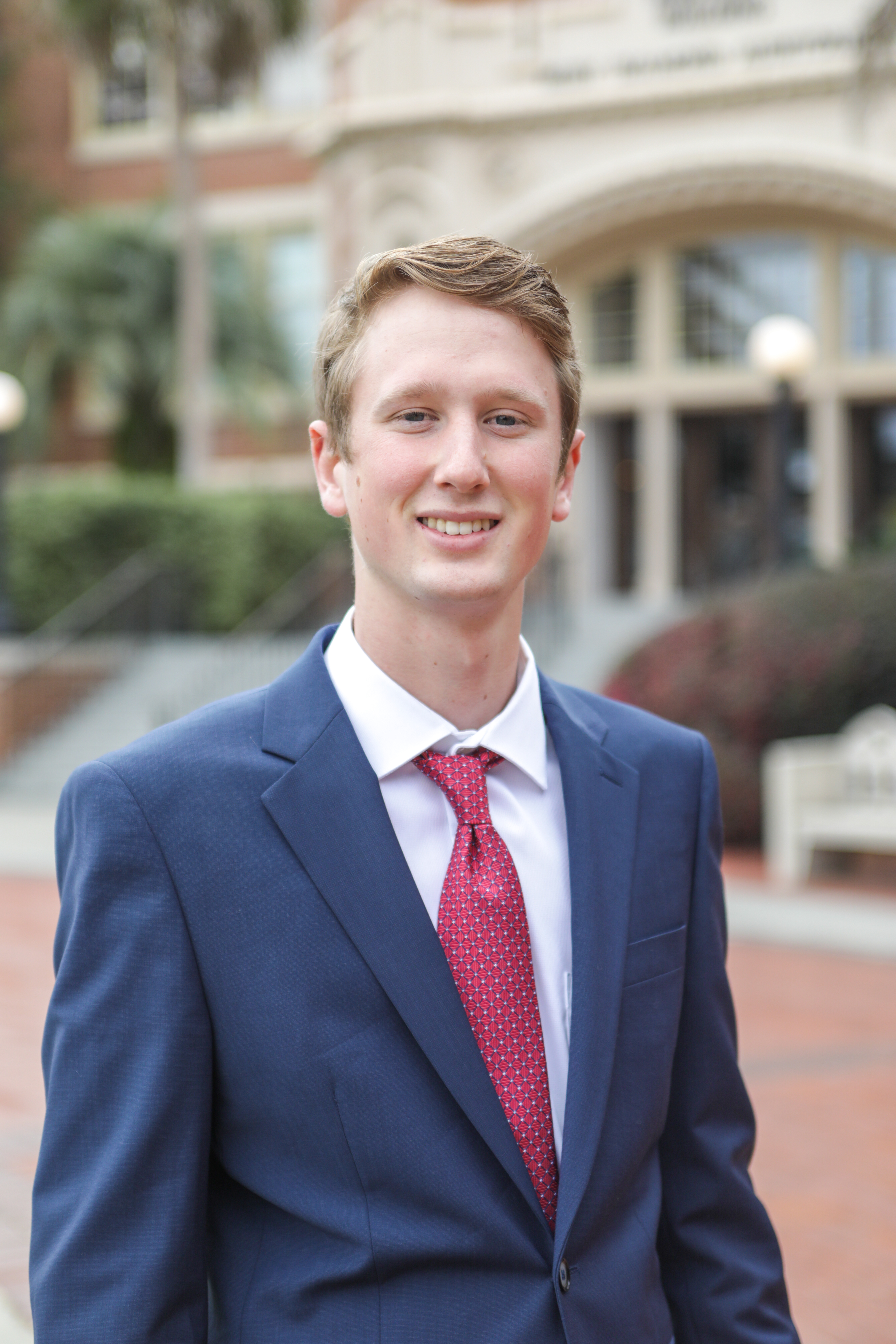
BIO
Jackson Steele, originally from Chicago, Illinois, is a driven second-year undergraduate student majoring in Interdisciplinary Medical Sciences Clinical Professions. His research endeavors are focused on enhancing the precision of glucose level predictions for artificial pancreas systems, a project he's passionately pursuing through the Undergraduate Research Opportunity Program. With a keen interest in the intersection of technology and medicine, Jackson has sharpened his coding and analytical skills in Dr. Higgins' lab at the College of Engineering. Beyond his academic pursuits, Jackson actively participates in the Phi Delta Epsilon Premedical Fraternity, Alpha Epsilon Delta Pre-Health Honor Society, Make Medicine Human, and engages in intramural sports.
Gray Box Modeling for Improved Accuracy of Glucose-level Prediction for the Artificial Pancreas
Authors: Jackson Steele, Taylor HigginsStudent Major: Interdisciplinary Medical Sciences Clinical Professions
Mentor: Taylor Higgins
Mentor's Department: Engineering Mentor's College: Notre Dame Co-Presenters:
Abstract
Gray box modeling is a combination of an analytical model (white box) with some form of machine learning (black box). In this project, we aim to leverage this modeling technique to better predict glucose levels in individuals with diabetes. Analytical (white box) models are differential equations that describe how a system evolves over time, but setting the parameters for these equations requires extensive knowledge or assumptions about an individual’s physiology. Machine learning (black box) strategies can produce patient-specific models, but often require onerous amounts of training data and lack safety guarantees when used for control purposes. Gray box modeling may allow us to mitigate the pitfalls yet leverage the benefits of both forms of modeling. We have built a neural network model (black box) that predicts the user’s glucose levels based on the biological signals available from an apple watch and a continuous glucose monitor. Next, we will obtain glucose predictions from a Diabetes Mellitus Metabolic Simulator (DMMS.R) [1] which relies on the Dalla Man model [2] of the human metabolic system (the white box prediction). We are hoping that the fusion of these two glucose-level predictions will result in more accurate predictions of glucose levels. This improved model will allow us to develop advanced control strategies for the artificial pancreas.
Keywords: Gray Box Modeling
24th annual Undergraduate Research Symposium, April 3, 2024
Maggie Acquaviva Poster Session 3: 1:30 pm - 2:30 pm/21
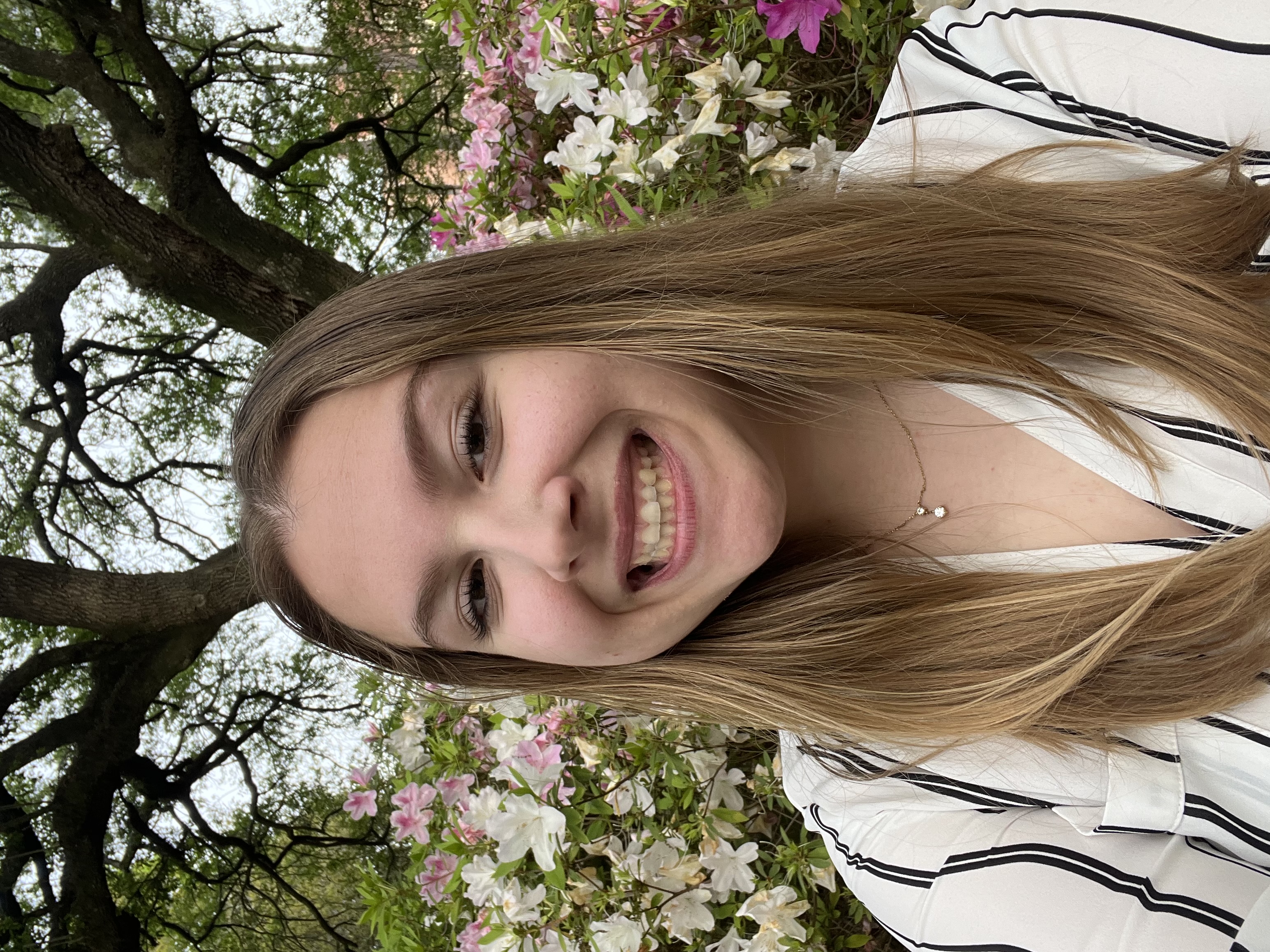
BIO
Maggie Acquaviva is an undergraduate at Florida State University majoring in Communication Science and Disorders with a minor in Spanish. She has been working with FSU's CLaSS Lab researching children's literacy and print referencing, and will go on to pursue the field of Speech-Language Pathology.
Developing an Adaptive Professional Development Model for School Professionals' Implementation of Shared Reading Activities
Authors: Maggie Acquaviva, Kelly FarquharsonStudent Major: Communication Science and Disorders
Mentor: Kelly Farquharson
Mentor's Department: Communication Science and Disorders Mentor's College: Communication and Information Co-Presenters: Jillian Kessler
Abstract
This study was motivated primarily by past obstacles faced when training educators and speech-language pathologists (SLPs) to implement dialogic reading strategies with children. Dialogic reading is a systematic form of interactive shared book reading with positive effects on the development of children’s oral language skills and could have similar benefits for students with disabilities. This study, driven by the need to reevaluate the approach to training educators in this technique, may also yield crucial information regarding the effectiveness of different professional development (PD) training components for future use in schools.
This study seeks to create PD training modules to aid educators and SLPs with the implementation of dialogic reading strategies for the purpose of improving children’s literacy.
Participants will submit three self-recordings of shared reading sessions with young children ages 3-8 years, in order to establish a baseline. After they are coded and analyzed, the participants will receive a video training module instructing them on the implementation of the Prompt, Evaluate, Expand, Repeat (PEER) technique. Finally, they will re-record the sessions using tools learned in the PD module, which will be coded using a web-based video-coding program,Vosaic, and analyzed by the research team to determine if further coaching is needed, in which case this will take place in the form of individualized Zoom sessions and they will be given written and verbal feedback.
This is an ongoing two-year trial and data collection is still underway. The expected date of completion is the end of summer 2025.
Keywords: literacy, reading, professional development
24th annual Undergraduate Research Symposium, April 3, 2024
Carson Rivera Poster Session 4: 2:45 pm - 3:45 pm /46

BIO
I am a first-year computer science student from Miami, Florida. I am currently an undergraduate research assistant at the FSU Machine Learning Lab focusing on large language models. In my free time, I compete for the FSU Club Track and Field team in distance events and play the clarinet. After graduating, I hope to become a software engineer focusing on backend development.
Problem-Solving with an AI Assistant: A Usability Test
Authors: Carson Rivera, Dr. Jonathan AdamsStudent Major: Computer Science BS
Mentor: Dr. Jonathan Adams
Mentor's Department: Information Mentor's College: College of Communication and Information Co-Presenters:
Abstract
Recent improvements in hardware, software, and cost-effective cloud services have allowed artificial intelligence (AI) technologies to be widely available on the consumer market. In the domain of higher education, current research focuses on administrative applications, with few focusing on how students can use AI to enhance their educational experience. This paper explores this knowledge gap and aims to help us understand how people interact with AI agents that can assist with learning. This research employed a usability test asking participants to solve a series of worded logic problems. During this test, undergraduate participants used Monica, a large language model interface to help them solve the problems. Participants were asked to describe their actions and thought processes while using the AI agent in a “think-aloud” protocol. The user interactions were transcribed and analyzed for keywords, themes, and topics that might best contextualize the interactions between the participants and the AI Agent.
Keywords: artificial intelligence, large language models, chatbots
24th annual Undergraduate Research Symposium, April 3, 2024
Carys Delahanty Poster Session 4: 2:45 pm - 3:45 pm /324

BIO
My name is Carys Delahanty and I am a sophomore majoring in Exercise Physiology from Atlanta, Georgia. I have been a part of the Hughes Fly Lab since January as a research assistant for the data analyzation portion of this lab. I look forward to getting involved in more research lab's in my future relating to microbiology, genetics, or biomedical research as those are my primary research interests. My postgraduate plans include attending medical school to become a doctor and hopefully being able to travel and work in places where medical care is unaccessibl
Evolutionary Constraints Associated with Color and Aggression in Drosophila melanogaster
Authors: Carys Delahanty, Kimberly A. HughesStudent Major: Exercise Physiology
Mentor: Kimberly A. Hughes
Mentor's Department: Evolution Mentor's College: Arts and Sciences Co-Presenters: Erica Peters and Zoe Tsiapalis
Abstract
One long standing question in evolutionary biology is whether single genes that control multiple traits (pleiotropy) result in limitations on adaptive evolution. If it does, then our ability to predict adaptation (e.g., in the face of changing environments) is compromised. We are using a much-discussed correlation between body coloration and aggressive behavior as a system to address this question. In Drosophila, this correlation is possibly attributed to dopamine being a precursor to melanin production. Higher melanin production would then result in less free dopamine, possibly resulting in more aggressive behaviors. To test the prediction that darker individuals were more aggressive, we selected for darker and lighter flies (D. melanogaster) and periodically tested for aggressive behavior. Every 5 generations, we tested for aggression and photographed each individual. We used ImageJ to measure the color of the thorax of the fly. We found that the darker flies are more aggressive, suggesting a pleiotropic effect. Our results suggest that dark-selected flies evolved to be more aggressive. The next step in this study is to identify candidate genes underlying the correlation and test for pleiotropic effects using transgenic approaches.
Keywords: fruit flies, evolution, pleiotropy, genetics, color
24th annual Undergraduate Research Symposium, April 3, 2024
Luca Santilli Poster Session 4: 2:45 pm - 3:45 pm /358

BIO
My name is Luca Santilli. I am from Nashville, Tennessee and am currently a freshman. I am interested in all kinds of research relating to Artificial Intelligence, and as a result, I love doing research with the Machine Learning lab (MLab) here on campus. As for my career goals, I wish to work in a field relating to Astronomy. Ideally, I would like to combine my two passions of AI and Astronomy wherever I end up.
The Use of Synthetic Media and the Creation of a Synthetic Media Pipeline in the Training of Artificial Intelligence
Authors: Luca Santilli, Dr. Jonathan AdamsStudent Major: Computer Science
Mentor: Dr. Jonathan Adams
Mentor's Department: School of Information Mentor's College: College of Communication and Information Co-Presenters:
Abstract
This research project examines both synthetic media and the creation of a synthetic media pipeline for use in training artificial intelligence. Synthetic media, or “deepfakes”, can be used to train AI. This is necessary as there is not enough data in the world to train all of the AI that we would like to train, and synthetic data is much cheaper and more efficient to create than “real” data. From there comes the need for a synthetic media pipeline where, with minimal input, you can train an AI cheaply and quickly.
This poster shows an example of a synthetic media pipeline that can output a trained computer vision model with the only input being a background image and a 3D model of what you would like it to identify, labeled adequately. It also explains the uses of synthetic media in training AI, as well as its necessity and limitations.
Keywords: Artificial Intelligence, Synthetic Media, Synthetic Media Pipeline, Computer Vision


